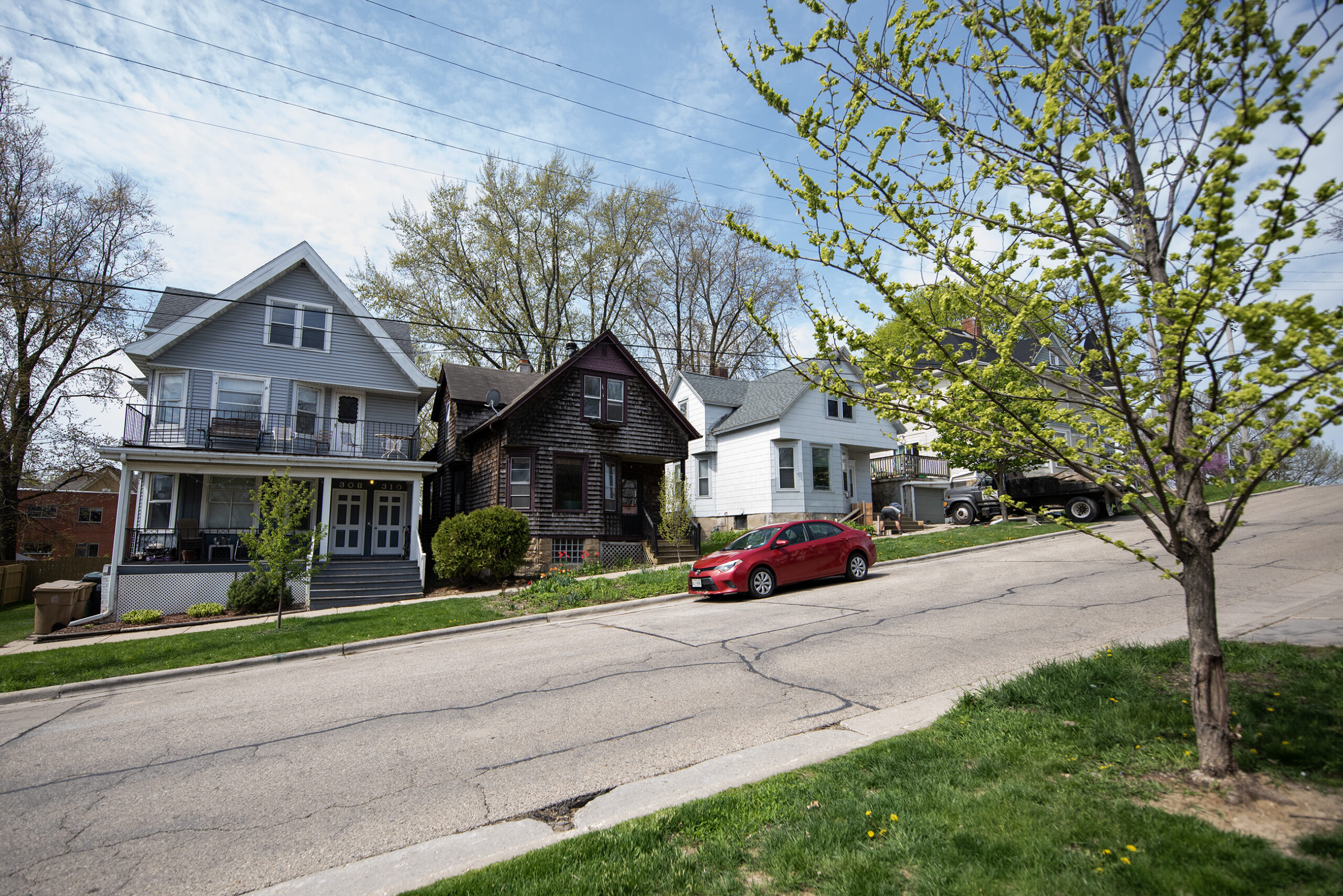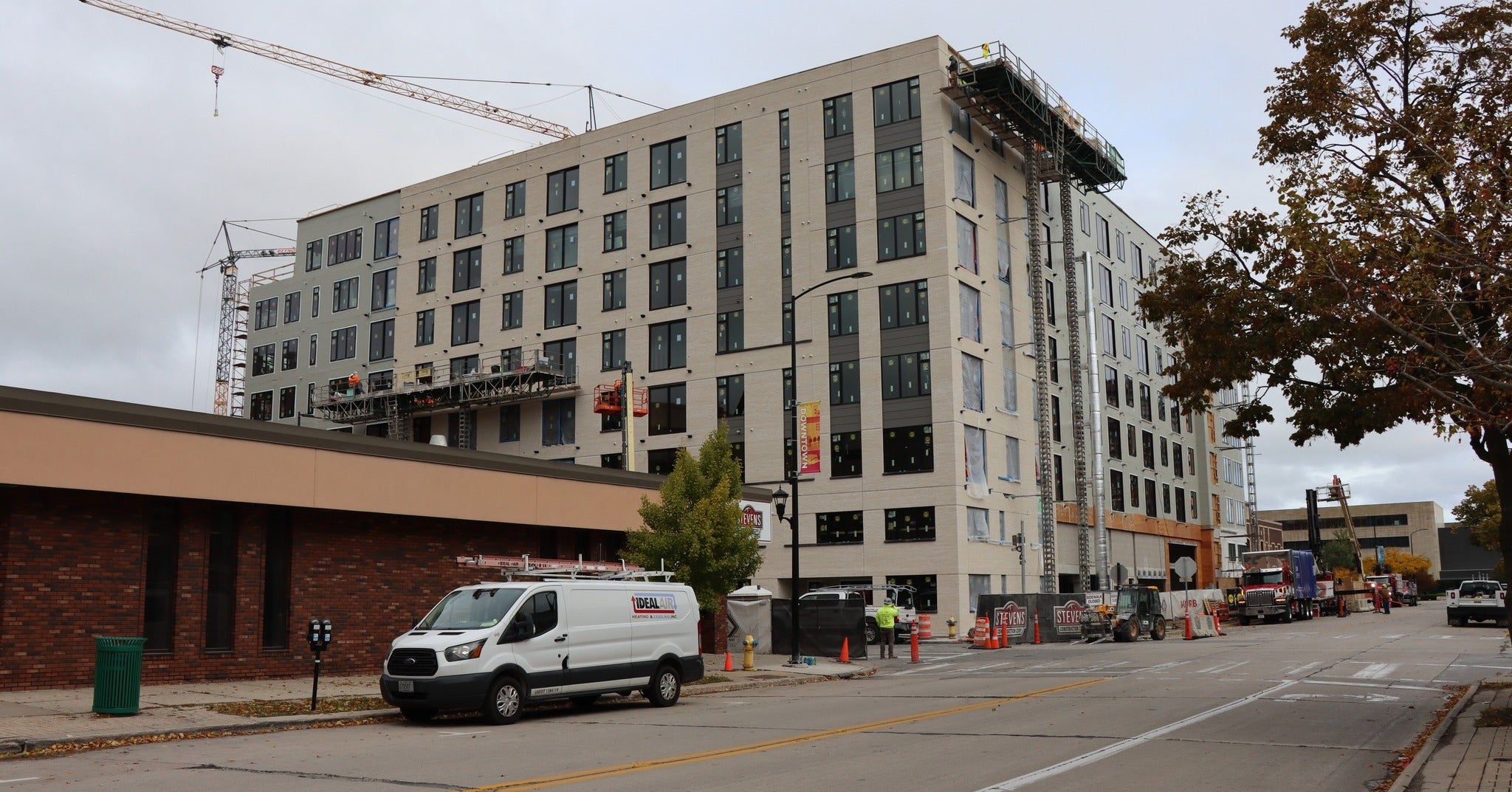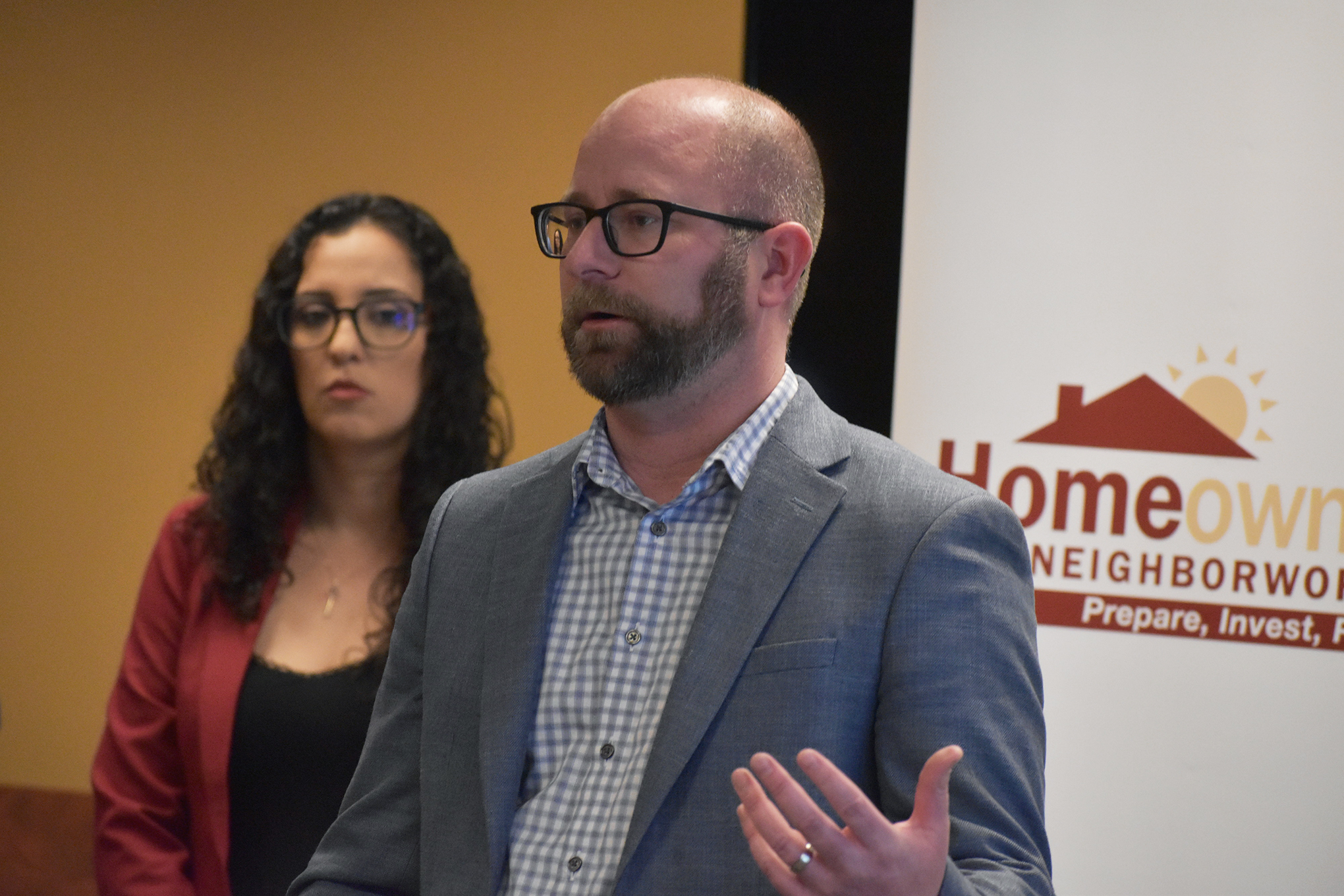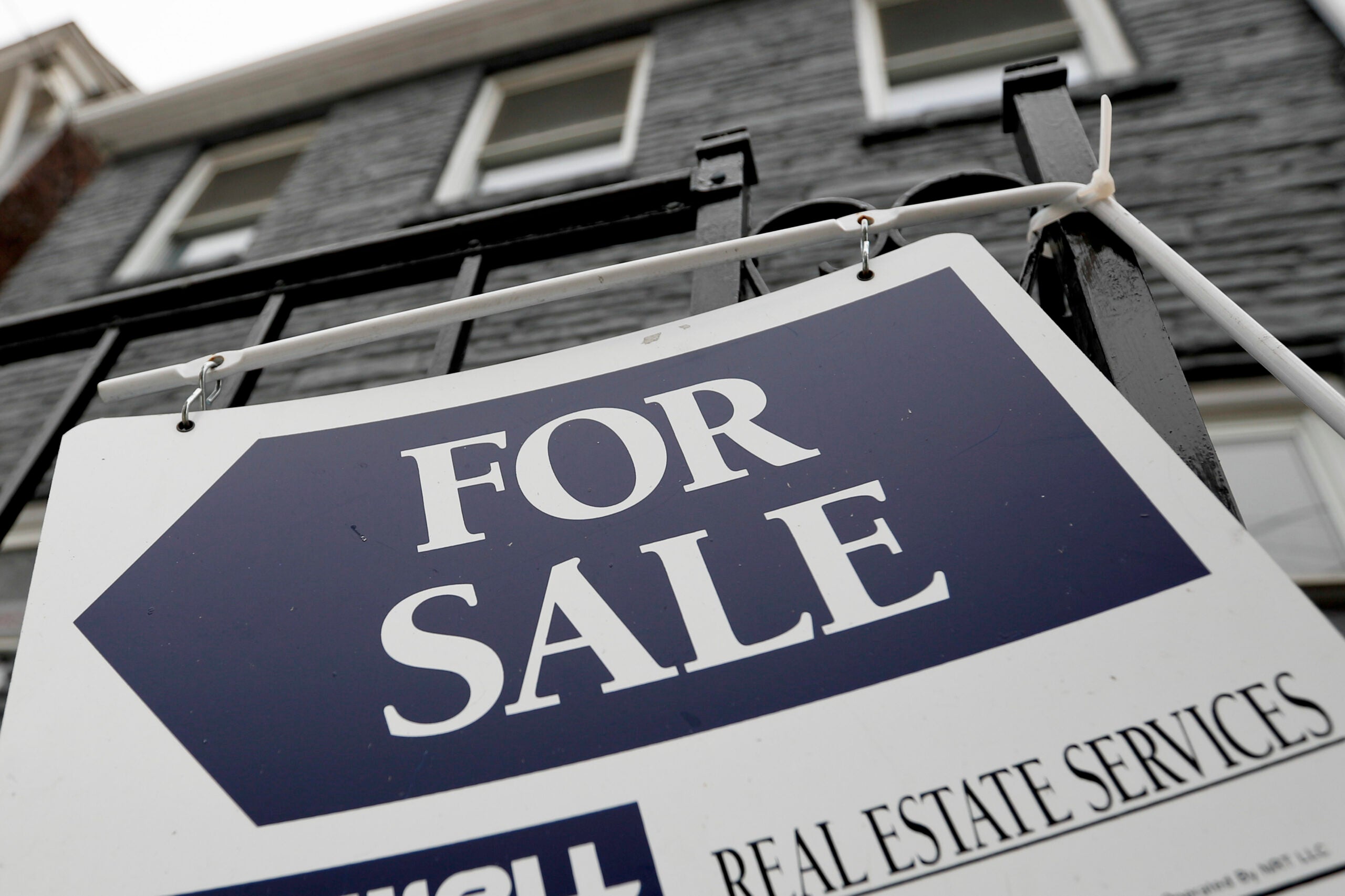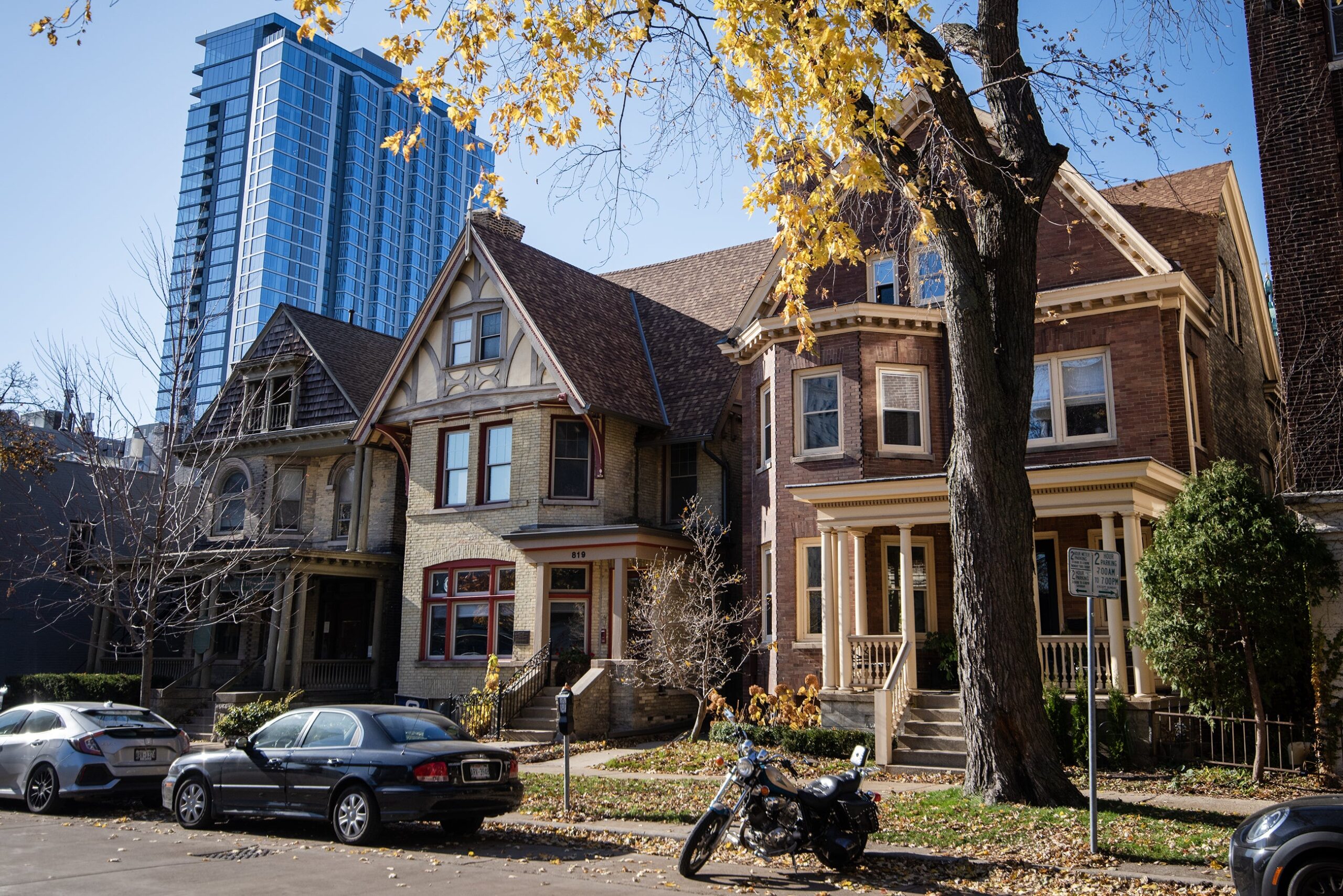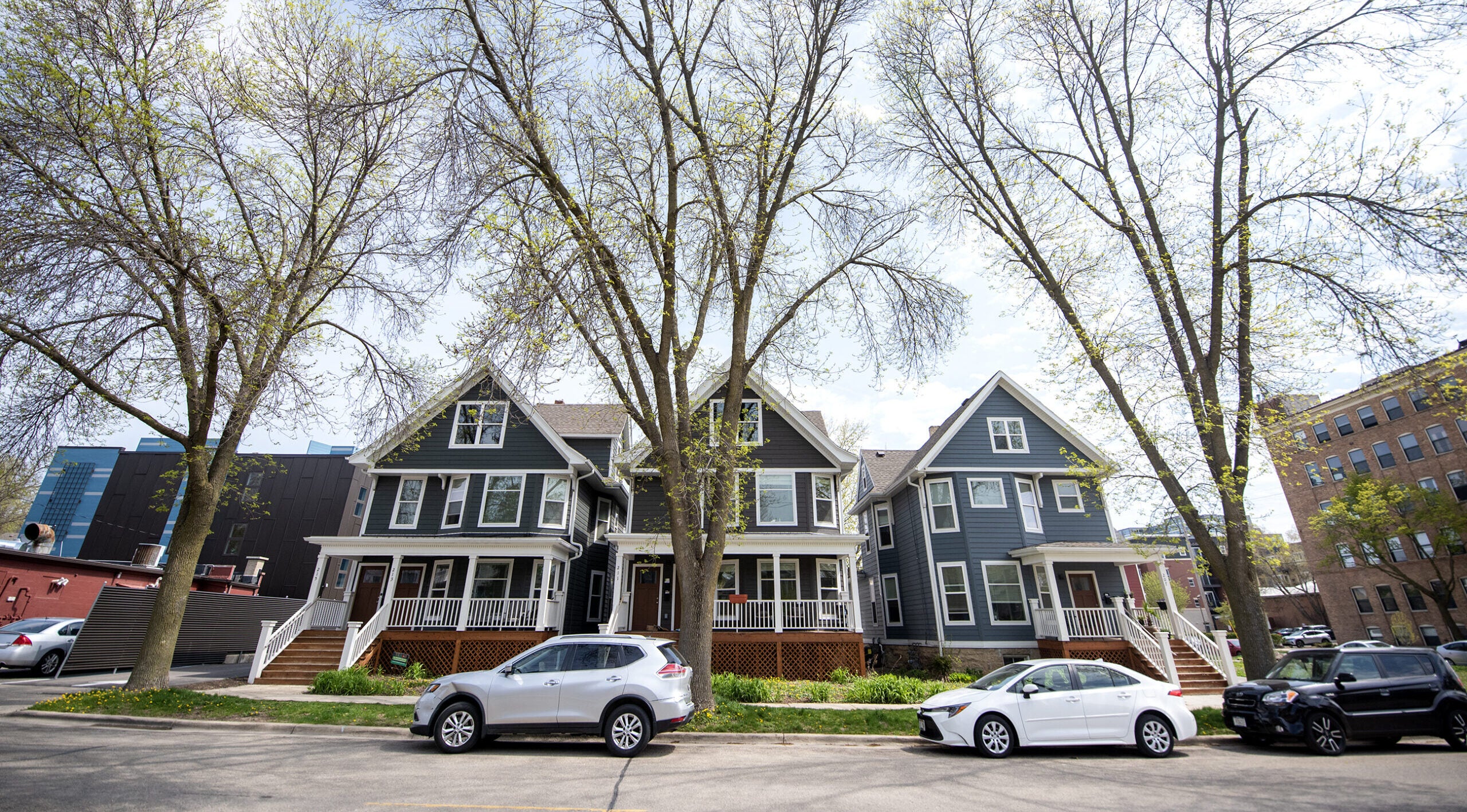Madison leaders are putting forward a new batch of zoning changes designed to increase the supply of housing in one of Wisconsin’s fastest-growing cities.
Mayor Satya Rhodes-Conway unveiled the package at a news conference Wednesday. The proposals are likely to clear the Common Council, since they’ve already secured majority support from legislative sponsors.
The mayor said that in recent years the city has made strides toward adding more housing “after building very little new housing for decades.”
News with a little more humanity
WPR’s “Wisconsin Today” newsletter keeps you connected to the state you love without feeling overwhelmed. No paywall. No agenda. No corporate filter.
“When we don’t build enough homes, what we see is that the competition for housing drives people out of our city,” Rhodes-Conway said. “So if we want economically diverse and vibrant neighborhoods, we need to build more homes, and we need homes of all kinds.”
One of the proposals would allow duplexes in all residential areas of Madison. Currently, they’re allowed in only about a third of Madison’s residential space, according to the city.
Another measure would allow a homeowner with a deep backyard to split that lot in two and build a second housing unit.
The final part of the package would fast-track the permit process for small- and medium-sized housing projects in Madison’s downtown.
Alder Tag Evers, who represents a district on the city’s near west side, characterized the amendments as a “modest” way to add “gentle density” to more areas of Madison.
“The ones that we’re talking about here are incremental,” he said. “Nobody is going to be forced to sell or build anything that they don’t want. They will not transform our neighborhoods dramatically. In fact, they will mostly make it easier to build the types of smaller homes that we used to build in this city.”
Nearly half of Madison renters and about a quarter of homeowners are considered cost-burdened after spending more than 30 percent of their income on housing, according to an analysis from the city.
And available housing gets snapped up quickly — the city’s rental vacancy rates are “well below healthy levels,” according to a recent report from the U.S. Department of Housing and Urban Development.
Evers said if the city doesn’t address those tends, “we end up on the losing end of the law of supply and demand, meaning our teachers, nurses, cops and firefighters can no longer afford to live in Madison.”
Madison’s Common Council is expected to introduce the legislation at their meeting Tuesday.
The package is part of the mayor’s Housing Forward Plan, in which the city aims to add 15,000 new housing units by 2030. In the last few years, council members have approved piecemeal changes designed to help meet that goal, including easing restrictions on coach houses, officially known as accessory dwelling units, and allowing higher-density zoning near public transit lines.
Rhodes-Conway says her office has been working with Madison’s zoning office on additional housing-related tweaks, and she expects to unveil yet another slate of housing legislation this summer or early this fall.
Wisconsin Public Radio, © Copyright 2026, Board of Regents of the University of Wisconsin System and Wisconsin Educational Communications Board.

